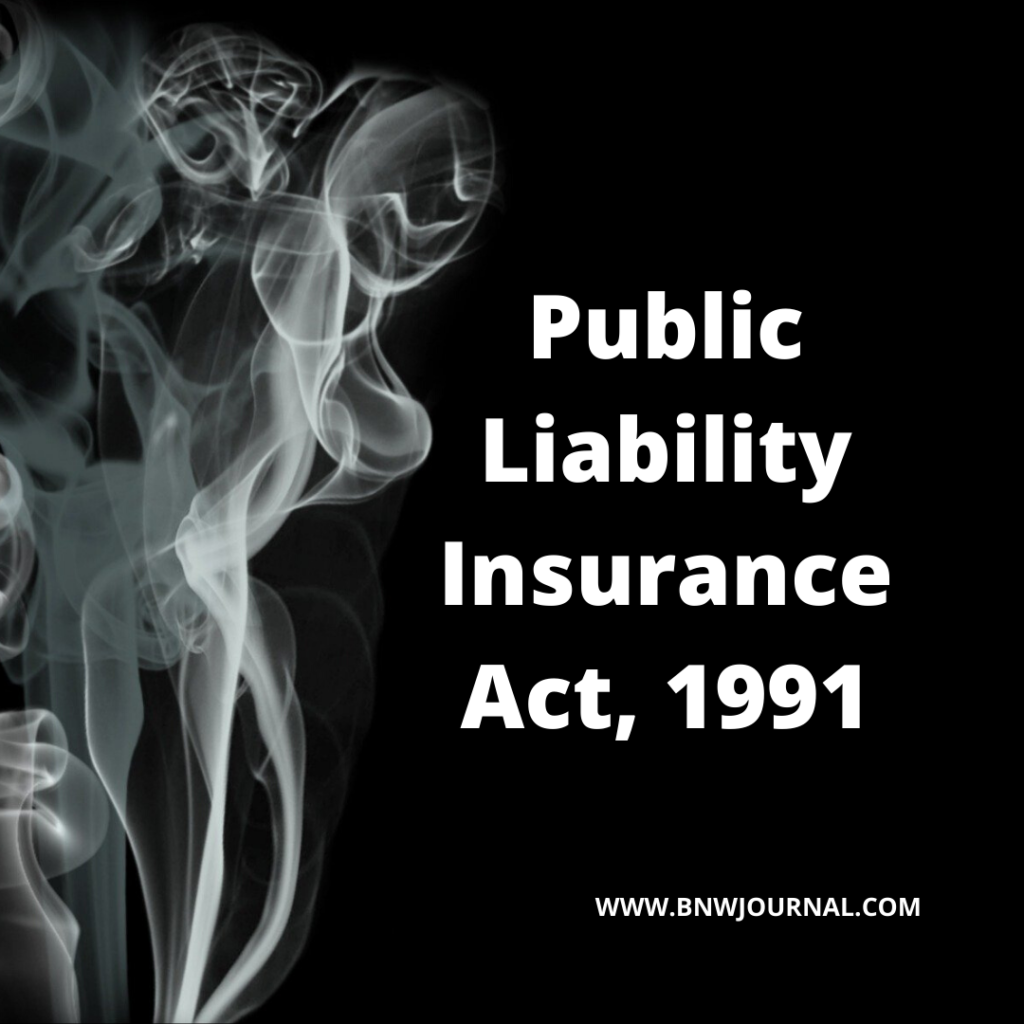![]()
INTRODUCTION
Public Liability Insurance Act is an act that came as an aftermath of the Bhopal Gas Tragedy that resulted in the tragic death of about 3000 people and is still affecting people with mutations and genetic disorders. This act is enact on the 22nd of January, 1991. This act frame with the motive of making factory owners insure against any potential personal injury and for any property damage that could occur in surrounding areas and communities.

PURPOSE OF THE ACT
This act enact to mainly provide relief immediately to persons other than the employees working in the factories. Specifically those who get affect as a result of accidents occurring while handling substances; that are hazardous and for other matters that are connect. This is ensured by the insurance amount paid by the owner of the hazardous substance.
BROAD MEANING OF THE TERM PUBLIC LIABILITY INSURANCE
Public Liability Insurance is an insurance that is cover against any hazardous substance. Or any property by the owner of the factory. The same money is pay as a relief or compensation to the claimant or any other person who is injure. The money is also given as a compensation for any damage that occurs due to such hazardous substance or property.
This act has a unique feature in the sense that; it ensures that there is a strict application of “No-Fault Liability” against the owners of such hazardous substances. The fault of the owner is not consider. It is just insuring of all the hazardous substances to ensure that the people who are injure can claim compensation.
PERSONS WHO CAN INSURE
Any owner of a hazardous property, before he gets to handle the property for his use, should take one or more insurance policies. Also provide contracts for insurance wherein he is protect against the liability to award. The relief to the person who claims to be injure. Or suffered any kind of a loss due to hazardous substance.
APPLICATION FOR RELIEF
According to the Public Liability Insurance Act, an application for relief can be by the claimant to the District Magistrate (Collector). It must be within 5 years of the accident, after serving a notice to the owner. The insurer and after having given both the parties an opportunity to be heard. The award would be made that would determine the amount of relief that is payable by the insurer.
The victim or the claimant is also given the facility to be heard in a higher court. It is for claiming a higher compensation.
Who can apply for claim/relief:
- The person who has sustained an injury due to the hazardous substance.
- The owner of the property in whose land the damage has been caused.
- The legal representative of the deceased or the victim, in case the accident has been fatal.
- An authorized agent of the legal representative or everyone who has been mentioned above.
ESTABLISHING A RELIEF FUND
The Act under Section 7A, provides empowerment to the Central Government to establish an Environment Relief Fund. It notifying the Official Gazette about the utility of paying a relief as per an award made by the District Magistrate under Section 7 of the Act.
POWER TO GIVE DIRECTIONS
The Act also deals with the power to bring about a call for entry, inspection, search, and seizure as well for gathering information. The owner of the factory or the hazardous becomes compel to submit the officer appoint by the Central Government any information. That the government reasonably needs with regards to the purpose of ascertainment, rules, directions. And requirements under the Public Liability Insurance Act.
Further, Section 12 of the Public Liability Insurance Act vests the power in the Central Government to issue any directions and orders in writing to the agency, owner, or officer. The directions can have the nature of prohibiting or regulating the usage of hazardous substances, the Central Government also has the power to control the supply and stoppage of facilities such as the electricity.
PENALTIES AND OFFENCES AS CATEGORIZED UNDER THE ACT
The Public Liability Insurance Act mainly provides for penalties for non-compliance with the rules encapsulated within the Act. Failure to follow and comply with the decisions or directions issued with regards to the prohibition or regulation of the handling of the hazardous substances or halting of electricity or water and so forth. Such a non-compliance can be make punishable for a minimum period of one year and six months but can extend to a period of six years, or by the imposition of fines, and that fine not be less than one lakh rupees.
For offenses that consequently keep on occurring, the imprisonment would be extend to a period of two years to seven years, with a fine of one lakh rupees or more.



0 Comments